Can gallstones and back pain be related?
Gallstones are one of the most common digestive issues, affecting millions of people worldwide. These small hardened collections of cholesterol or bile salts can develop in the gallbladder, causing a range of symptoms, from mild discomfort to intense pain. At the same time, back pain is a widely reported complaint, with many potential causes, including muscle tension, nerve compression, or issues related to internal organs.
But can these two health concerns be connected? Can gallstones be one of the causes of back pain? In this post, I will thoroughly explore this connection, explaining how gallstones can cause pain that radiates to the back, and what symptoms might indicate a serious problem. Additionally, I will provide guidelines on when to see a doctor and what you can do to prevent this issue.
Gallstones (Latin: cholelithiasis) are solid particles that form in the gallbladder. The gallbladder is a small organ located under the liver that stores and releases bile—a fluid that helps digest fats. When the composition of bile changes, such as when it contains too much cholesterol, bile salts, or bilirubin, it can crystallize and form gallstones.
Gallstones can vary greatly in size—from a few millimeters to several centimeters. Smaller stones may be asymptomatic and go undetected, while larger ones can cause significant pain and complications. Statistics show that gallstones are more common in women, people who are overweight, and the elderly, but genetics and lifestyle also play significant roles.
While many people with gallstones don't experience symptoms, they can be quite uncomfortable in certain cases. Typical symptoms include:
Gallstone attacks—intense pain episodes that can last from a few minutes to several hours.
Pain in the upper abdomen or under the right rib cage, which may radiate to the back or between the shoulder blades.
Nausea and vomiting, especially after a fatty meal.
Digestive issues, such as bloating, gas, or a feeling of heaviness in the stomach.
Several factors increase the risk of developing gallstones:
Gallstones can remain silent for a long time and cause problems only when they block bile ducts or irritate the gallbladder wall. This can lead to pain, inflammation, and even infection, which requires prompt medical attention.
Gallstones can cause more than just abdominal pain. One of the most characteristic symptoms of gallstones is pain that radiates to the back or between the shoulder blades. This happens because the nerves of the gallbladder are connected to other areas of the body, including the diaphragm and upper abdominal nerves, which can cause referred pain.
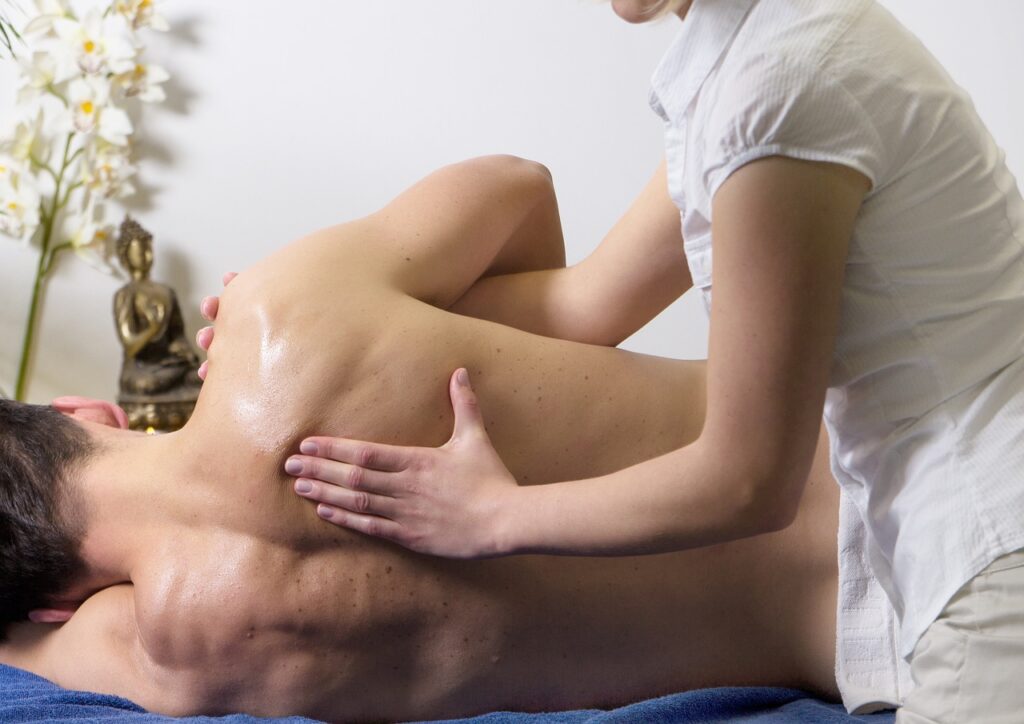
The back pain caused by gallstones is often specific and is described as follows:
Other symptoms: Nausea, vomiting, and a feeling of heaviness in the stomach may accompany the pain.
Location: The pain typically starts in the upper right abdomen or under the rib cage and may radiate to the back, between the shoulder blades, or sometimes even to the right shoulder.
Nature: The pain is usually dull, pressing, or sharp and may occur in episodes (gallstone attacks).
Timing: The pain often occurs after eating, especially when the food is fatty, and can last anywhere from a few minutes to several hours.
The gallbladder is located under the liver and is closely connected to the diaphragm and the nerve network of other internal organs. When gallstones block the bile duct or irritate the gallbladder wall, nerve endings are activated, transmitting pain impulses to other parts of the body. This explains why the pain can radiate to the shoulder blades or back.
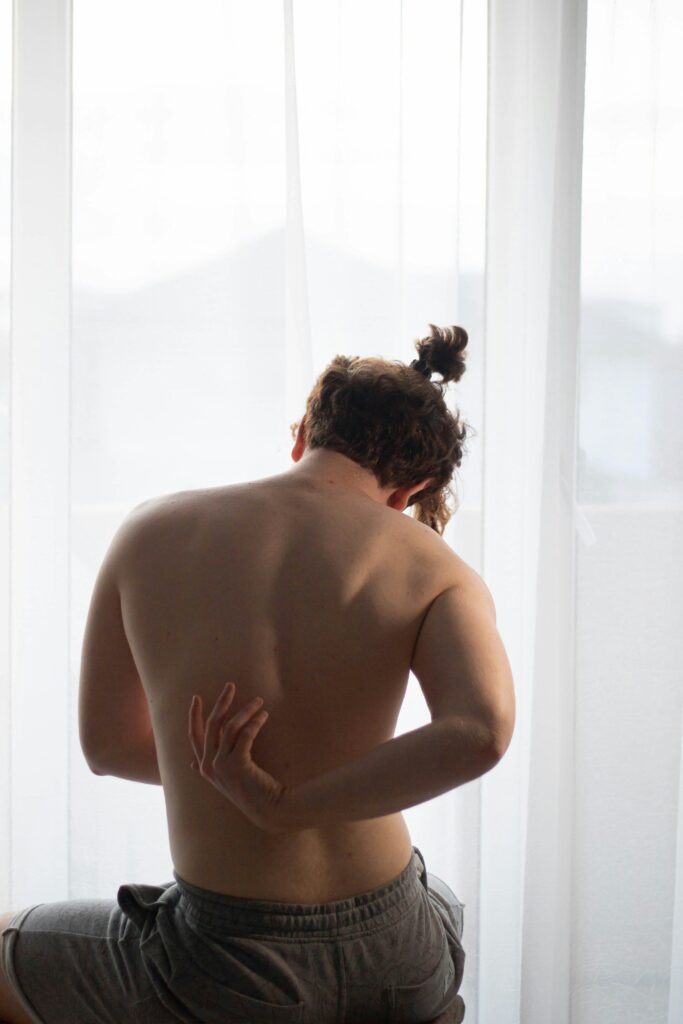
Since back pain is often associated with muscle tension, nerve compression, or skeletal issues, it can be challenging to identify whether gallstones are the cause of the pain. Here are some differences:
If the pain becomes very severe or is accompanied by the following symptoms, it may indicate a more serious problem:
If these symptoms occur, it is important to seek medical attention immediately.
While gallstones can be one of the causes of back pain, there are many other more common causes that could be the source of the pain. It is important to understand how to differentiate them to get an accurate diagnosis and appropriate treatment.
The most common cause of back pain is muscle tension or injury, which can occur due to:
Pain caused by muscle tension is usually localized, worsens with movement, and improves with rest.
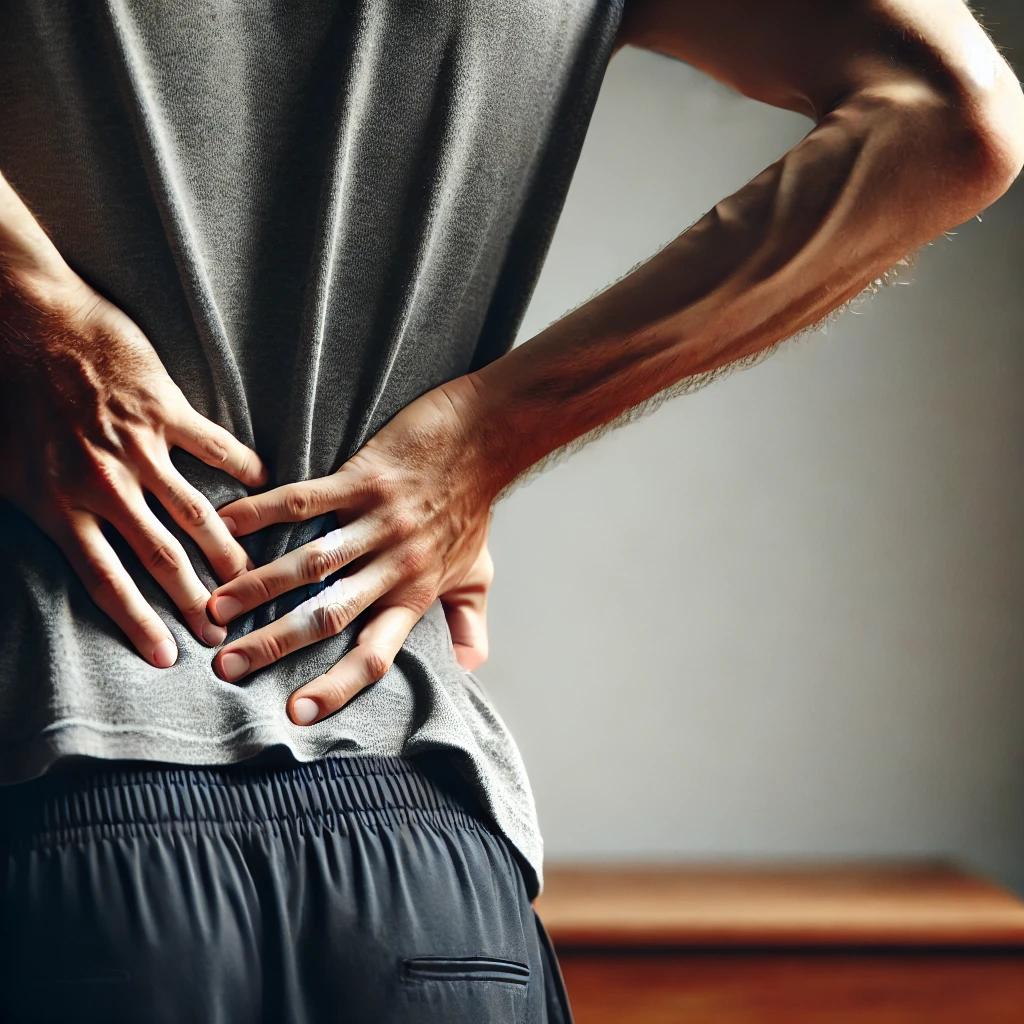
Spinal issues, such as a herniated disc or nerve compression, can also cause back pain. This type of pain may be:
Gallstone pain differs from this, as it does not depend on body movements and does not radiate from the mid-back.
Kidney stones can cause pain that starts in the lower back and radiates to the side or abdomen. This pain often includes:
The pain from kidney stones can be distinguished from gallstone pain by the location—the pain from kidney stones is more likely to be felt in the lower back, while gallstone pain occurs in the upper abdomen and between the shoulder blades.
In addition to gallstones, other abdominal organ problems, such as pancreatitis, stomach ulcers, or irritable bowel syndrome, can radiate to the back and cause discomfort. The difference usually lies in the accompanying symptoms:
Pain caused by gallstones is typically associated with the following characteristics:
Gallstone-related pain can range from mild discomfort to serious health problems requiring prompt medical intervention. Here are guidelines on when to seek medical attention:
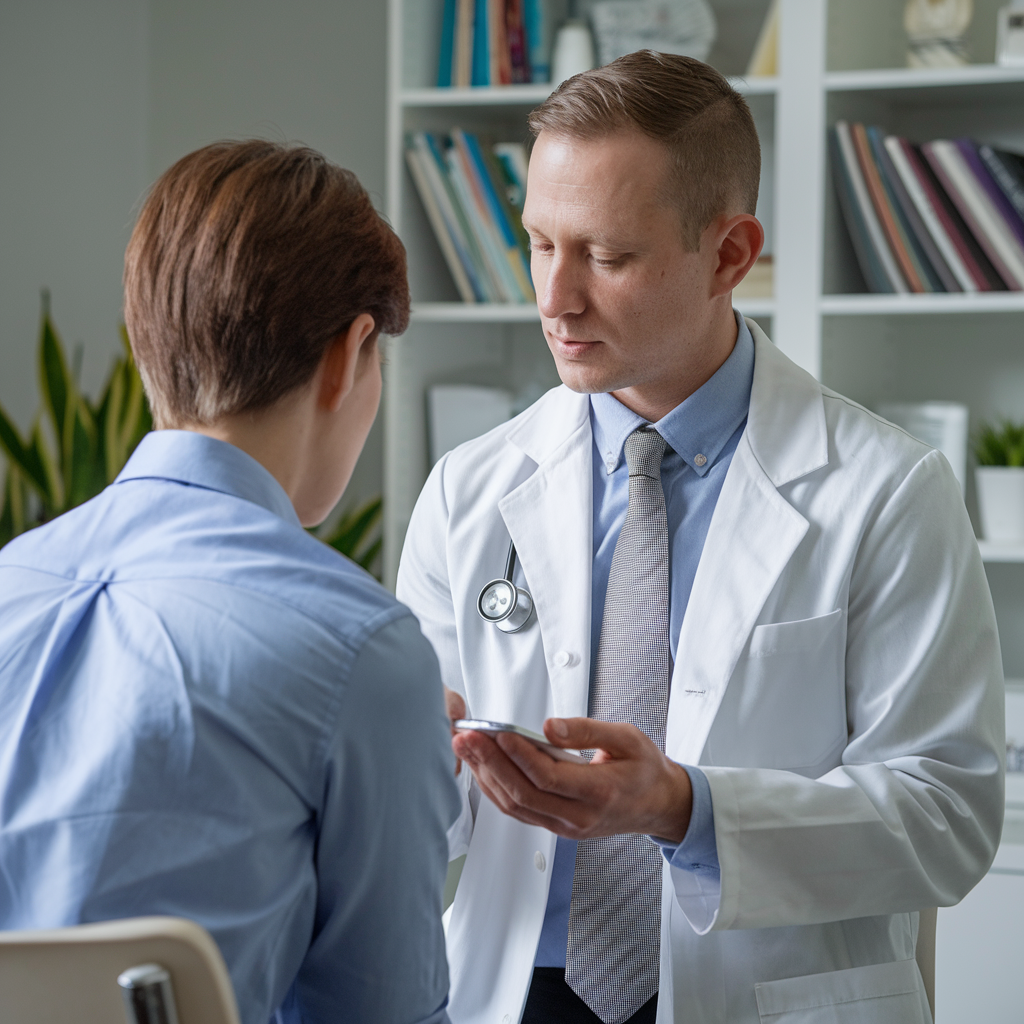
Gallstone attacks (intense pain episodes) may be the first signs of a blockage in the bile ducts caused by gallstones. If the pain lasts more than a few hours and doesn't subside, medical help is necessary. Severe and persistent pain may indicate gallbladder inflammation (cholecystitis) or a bile duct obstruction, which can be dangerous.
The following symptoms may indicate a serious complication, such as gallbladder inflammation, bile duct infection (cholangitis), or pancreatitis:
Milder gallstone pain may sometimes ease by avoiding fatty foods and resting. However, if the pain frequently returns or worsens, medical intervention is necessary.
If a doctor suspects that gallstones are the cause of your back or abdominal pain, they may use the following diagnostic methods:
After making a diagnosis, the doctor will recommend an appropriate treatment plan, which may include:
Although gallstones may be partly influenced by genetic predisposition, the risk can be significantly reduced by healthy lifestyle and dietary habits. Here are practical tips to reduce the likelihood of developing gallstones:
A fiber-rich diet helps regulate cholesterol levels in the bile and keeps digestion healthy. Recommendations:

Obesity, especially abdominal fat, is one of the main risk factors for gallstones. If your weight is too high:
Extreme weight loss diets or long-term fasting can alter the composition of bile and increase the risk of gallstones. Instead:
Regular physical activity helps control weight and improve metabolism.

Certain medications, such as hormonal birth control and hormone replacement therapy, can increase the risk of gallstones. If you're on these medications:
While excessive consumption of fatty foods can promote gallstone formation, healthy fats are necessary for normal bile production and flow.
Dehydration can alter the composition of bile and promote the formation of stones. Adequate fluid intake helps maintain bile flow and reduce the risk of stones.
Digestive bitters help promote the production of bile with a better composition, which reduces the formation of gallstones.

KIf the gallbladder is removed, the body can still function. The liver continues to produce bile, but it flows directly into the small intestine without being stored in the gallbladder. Most people adapt well to this change if they make some dietary adjustments:
Preventing gallstones and seeking timely treatment helps avoid serious complications, such as inflammation and infection. If you are at high risk for gallstones or suspect you may have them, it is worth consulting a doctor to find the best solution for maintaining your health.
Gallstones and their associated back pain are common but often underdiagnosed issues that can significantly affect a person's quality of life. The topics covered in this article provide a comprehensive overview of how gallstones form, what symptoms may indicate their presence, and how they may be linked to back pain.
Key Takeaways
While back pain can result from many different causes, ruling out gallstones is an important step in maintaining your health. Without treatment, gallstones can lead to serious complications, such as inflammation, infections, or even pancreatitis. However, the right diagnosis and treatment can quickly relieve the pain and restore quality of life.
If you've experienced symptoms related to gallstones or back pain, don't hesitate to consult a specialist. Whether it's dietary changes, lifestyle improvements, or surgical intervention when necessary, each step is aimed at better health.
Your health is your responsibility—take care of yourself consciously and consistently.
If this article was helpful, share it with others who could also benefit from understanding the connection between back pain and gallstones..

Digestive bitters are extracts from bitter herbs, combining 8 different plants that work synergistically to support the liver and gallbladder function – burdock root, artichoke, dandelion root, fennel, ginger, juniper berries, and peppermint.
Bitter herbs stimulate the liver to produce more bile. When gallstones form, the quality and composition of bile are crucial. If the bile flows better, is less thick, and is of better quality, fewer gallstones are formed, and existing pain may also subside.
Gallstones can also form when bile remains stagnant in the gallbladder for too long, causing stones to accumulate. When bile is effectively released, the gallbladder functions more efficiently, and fewer gallstones are formed.
Bitter herbs stimulate the liver to work more efficiently. The liver is the body's detoxification center, helping to eliminate toxins and waste products from bodily functions. The health of the liver and gallbladder are closely interconnected.
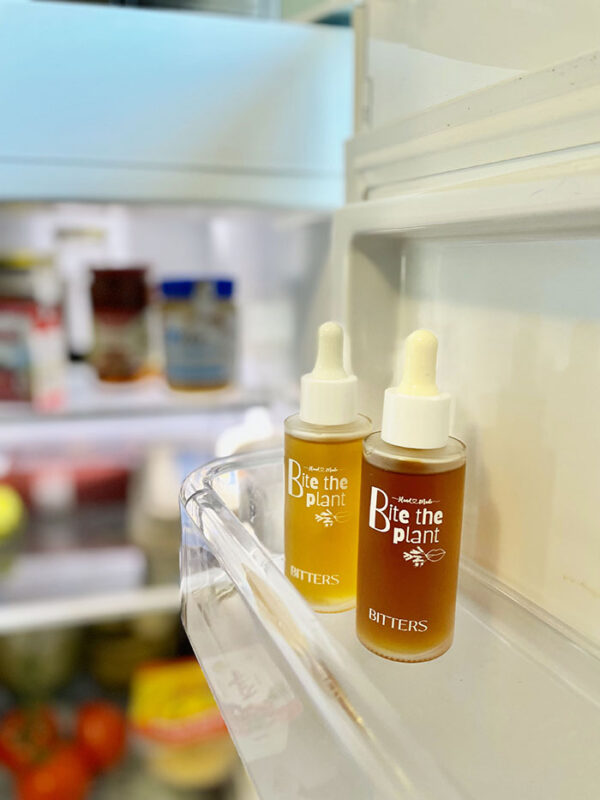
"Since I started taking a few drops of the digestive bitters before dinner, I haven’t had any more gallbladder attacks. And that’s how it’s been. So, it’s definitely good and useful stuff. 🙂 Before, I used to have pain once or twice a month if I slipped up. I had to be really careful about what, when, and how much I ate."
IREEN LAHT
"I had severe gallstone attacks—the stone moved and caused *mega* pain that lasted for hours. It was so bad, I was groaning on the floor from the pain. When I started using the digestive bitters, the attacks became less frequent, and there were several months without any. When an attack did come, I’d take the bitters right away. For about a minute, the pain intensified, and then *boom*—it was over. I basically got up and carried on with my day. It was like a miracle! It solved all the pain in just 2 minutes. It probably got the bile flowing, and the stone that was stuck in the bile ducts started moving."
TRIIN ÜLESOO
Read more:
Piinavatest sapikividest vabaks - kaasaegsed loodusravi võtted
4 põhjust, miks sapikivid piinlikku kõhulahtisust tekitavad
Sapikivide sümptomid või muud kõhuprobleemid - kuidas vahet teha?
Used sources: OSF Healthcare, Emedicinehelp